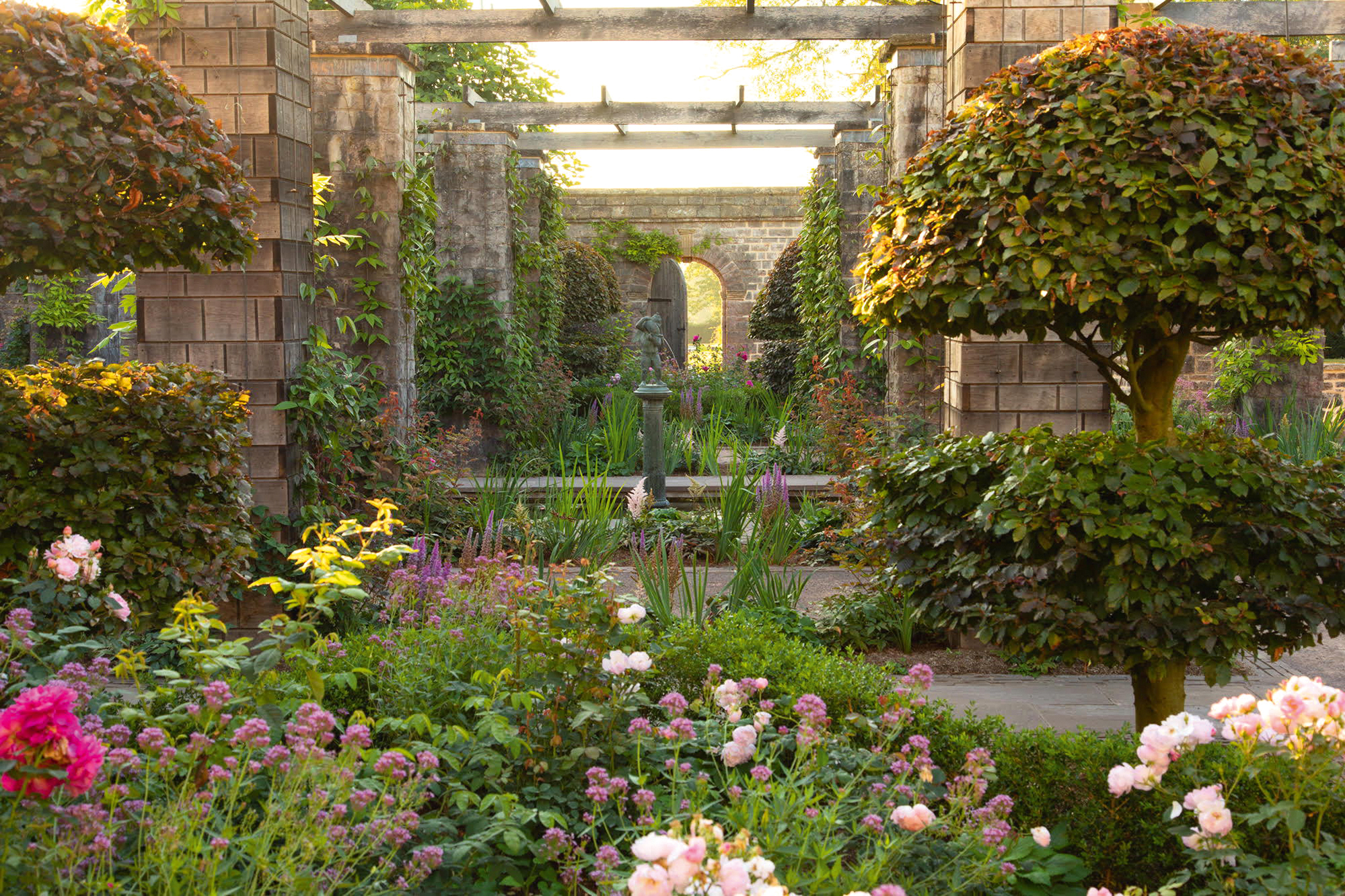The magnificently beautiful house and garden of the writer who helped make Country Life what it is today
Timothy Mowl looks at Mounton, a house created by Henry Avray Tipping, who served as architectural editor of Country Life over a century ago.


In torrential rain and buffeted by vicious cross winds, I drove over the old Severn Bridge into Wales recently to meet Helena Gerrish at High Glanau Manor, her house near Monmouth, originally designed for himself by Henry Avray Tipping. I was there to talk to Mrs Gerrish about her latest book on another Tipping house, Mounton, near Chepstow, which has just undergone an extraordinary restoration.
‘Harry’ Tipping began to write for Country Life in 1903 and became its Architectural Editor in 1907. By the time he began building Mounton in 1911, Tipping had written a staggering 700 articles; he was, therefore, instrumental in turning the magazine, which originally focused on racing and golf, into the country-lifestyle publication we know today.
Although many Edwardians chose the home counties for their weekend boltholes, Tipping opted for the picturesque Wye after the opening in 1886 of the Severn Tunnel. In 1894, he bought Mathern Palace, equidistant between Chepstow and the station at the Tunnel junction, where he undertook a meticulous restoration of the ruined bishop’s residence and laid out a remarkable water garden in the Mounton valley, two miles to the north.
Tipping lived at Mathern with his mother until her death in 1911 and then, with an inheritance of the equivalent of £32 million, he set about building above the valley a house commanding views of the Severn estuary where the Arts-and-Crafts aesthetic of house and gardens conceived as a single entity could be demonstrated.
"Mr Maynard and Tipping are kindred spirits — plantsmen who design gardens for others, but who are also passionate about their own gardens"
Tragically, Mounton was truly a house and garden of a golden afternoon or, rather, the brief summer of 1914. It was ready to receive guests in the May of that year; Archduke Franz Ferdinand was assassinated in June and war broke out in August. There was no going back in 1918: Mounton had become a liability, there was no manpower, so Tipping retreated to High Glanau to pursue a simpler life until his death in 1933. Mounton was eventually sold in 1936 and then again in 1948, when it became a school.
In 2002, it was converted into 17 dwellings and the garden was left to decay. Since its conversion, the current owners have systematically bought up units and now own the whole house. Taking a most scholarly and sensitive approach, they have restored Tipping’s interiors and overseen a remarkable re-creation of his gardens. Arne Maynard Garden Design was appointed in 2016 and work is still going on.
Living in South Wales, Mr Maynard understands the local aesthetic — the significance of wild areas and the need to create smooth transitions from formal to natural — precepts popularised by William Robinson and Gertrude Jekyll in their publication The Garden, which ran 12 technical articles on Mounton between 1910 and 1921, many written by Tipping himself. One features his favourite stiff-stemmed Darwin tulips, perfect for a blustery plateau. These articles, shot through with Tipping’s insights, were assembled by Mrs Gerrish for Mr Maynard to mine for the transformation.
Exquisite houses, the beauty of Nature, and how to get the most from your life, straight to your inbox.
Mr Maynard and Tipping are kindred spirits — plantsmen who design gardens for others, but who are also passionate about their own gardens. The terrace to the south of the house has been completely relaid and a wide border of seasonal planting introduced below the retaining wall to soften the hard landscaping. Wedding-cake topiary yews, interspersed with beech topiary to reflect an original copper beech, dramatise the relative calm of the Bowling Green terrace. Urns brought by Tipping from the family home, Brasted Place in Kent, punctuate each end, whereas to the east is that obligatory Edwardian feature, a majestic pergola with a pool. It is supported on 24 square rose- and wisteria-entwined pillars, two of which, modern and constructed of oak, are already silvering down to match the originals.
But it is the Rock Garden that astonishes. This had to be re-created from scratch with local puddingstone boulders. Now, it is enlivened by gently falling streams of water and studded with aquatic plants, mosses and Japanese maples. Even on a rainy day in late October, the autumnal colours were matchless and combined with the topiary and trees of the upper terraces to produce that visual harmony for which Tipping strove and which Mr Maynard has brilliantly restored.
Country Life is unlike any other magazine: the only glossy weekly on the newsstand and the only magazine that has been guest-edited by His Majesty The King not once, but twice. It is a celebration of modern rural life and all its diverse joys and pleasures — that was first published in Queen Victoria's Diamond Jubilee year. Our eclectic mixture of witty and informative content — from the most up-to-date property news and commentary and a coveted glimpse inside some of the UK's best houses and gardens, to gardening, the arts and interior design, written by experts in their field — still cannot be found in print or online, anywhere else.
